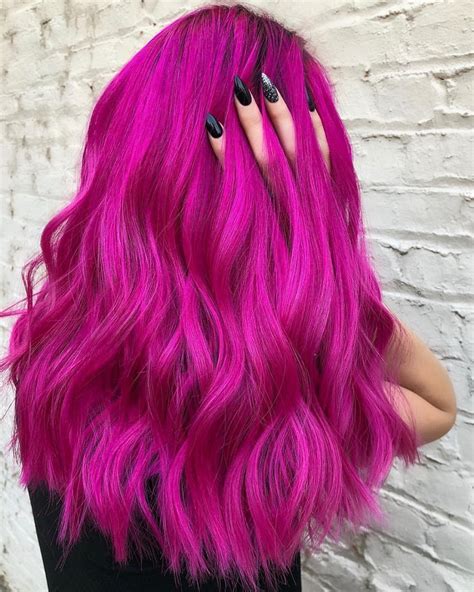In the realm of beauty, hair color holds a captivating allure, serving as a canvas for creative expression and a reflection of personal style. The ever-evolving landscape of hair coloring techniques and shades offers a kaleidoscope of options, from classic hues to daring and experimental creations.

The Power of Color: Why Hair Coloring Matters
According to the American Academy of Dermatology, over 50% of women in the United States regularly color their hair. This widespread popularity stems from hair coloring’s ability to:
- Enhance appearance: A well-chosen hair color can accentuate facial features, complement skin tones, and create a youthful or sophisticated aura.
- Express individuality: Hair color provides a unique and customizable way to showcase personal style and make a bold fashion statement.
- Conceal imperfections: Gray coverage and root touch-ups can restore hair’s natural appearance, boosting confidence and self-esteem.
The Science of Hair Coloring: Pigments and Processes
Hair coloring involves the use of pigments to deposit color onto hair strands. There are two main types of hair pigments:
Melanin: Natural pigments responsible for hair’s base color, ranging from black to blonde.
Artificial pigments: Man-made chemicals used to modify hair color, available in a wide range of shades.
Hair coloring processes can be categorized as permanent, semi-permanent, or temporary:
Permanent: Penetrates the hair shaft and permanently alters hair color. Requires regular touch-ups as new hair grows in.
Semi-permanent: Deposits pigments on the hair’s surface, fading gradually over several weeks. Provides less dramatic results than permanent color.
Temporary: Coats hair with a thin layer of pigment that washes out after one or two shampoos. Ideal for experimenting with new colors without long-term commitment.
Trending Hair Colors for Every Style
The current hair color landscape is bursting with vibrant hues and innovative techniques. Here are some of the most popular and eye-catching trends:
Brunette with Caramel Highlights: This classic combination adds warmth and dimension to dark hair, creating a soft and natural look.
Golden Honey Blonde: A flattering shade that brightens skin tones, ranging from warm golden to cool platinum blonde.
Ash Gray: A sophisticated and edgy color that can be customized with various undertones, such as lavender, purple, or blue.
Rose Gold: A blend of pink and gold, this ethereal shade adds a touch of fantasy to any hairstyle.
Copper and Auburn: Rich, warm shades that complement red and orange undertones, creating a dynamic and fiery look.
Hair Color Techniques: Embracing Creativity
Beyond color, hair coloring techniques can elevate the look of any hue. Some popular options include:
Balayage: A freehand painting technique that creates a natural, sun-kissed effect.
Ombré: A gradual color transition from dark to light, creating a dimensional and stylish gradient.
Sombre: A subtler version of ombré, with a less defined transition between colors.
Highlights and Lowlights: Strategic placement of lighter and darker strands to add depth and texture to hair.
Tips and Tricks for Choosing the Perfect Hair Color
Choosing the perfect hair color requires careful consideration of factors such as skin tone, eye color, and desired style. Here are some tips to help you make an informed decision:
- Warm vs. Cool Skin Tones: Determine your skin tone by checking the veins on your wrist. If they appear greenish, you likely have a warm skin tone. If they appear bluish, you have a cool skin tone. Warm skin tones look best with warm colors, while cool skin tones suit cool colors.
- Eye Color Enhancement: Enhance your eye color by choosing a hair color that complements it. For example, blue eyes look stunning with golden or copper tones, while brown eyes are accentuated by warm or auburn shades.
- Consider Your Lifestyle: If you lead an active lifestyle or frequently swim, consider a low-maintenance hair color that won’t fade prematurely. For those who prefer to switch up their look often, temporary or semi-permanent colors offer greater flexibility.
FAQs on Hair Coloring
Q: How often should I get my hair colored?
A: The frequency of hair coloring depends on the method used and your natural hair growth rate. Permanent hair color typically requires touch-ups every 4-8 weeks, while semi-permanent and temporary colors may last a few weeks or less.
Q: Can hair coloring damage my hair?
A: All hair coloring treatments can potentially cause some damage to hair. The severity of damage depends on the type of color used and how frequently it is applied. Regular hair care, including deep conditioning and using color-safe products, can help minimize damage.
Q: Is it possible to lighten my hair without bleach?
A: Yes, it is possible to lighten hair naturally without bleach using methods such as lemon juice, honey, or chamomile tea. However, natural lightening methods may take longer and may not produce as dramatic results as bleach.
Q: What is the difference between a toner and a dye?
A: Toners are semi-permanent hair colors that deposit pigment to correct brassiness, enhance color, or neutralize unwanted tones. Dyes, on the other hand, permanently alter hair color and can be used to achieve a wide range of shades.
Q: How can I protect my hair color from fading?
A: To prevent hair color from fading, use color-safe shampoos and conditioners, limit heat styling, and avoid overwashing your hair. Sunscreen can also help protect hair from UV damage, which can cause color fading.
Conclusion: Express Yourself Through Color
Hair coloring has evolved into an art form, offering endless possibilities for personal expression and style enhancement. Whether you prefer classic hues or bold and adventurous creations, embracing trending hair colors empowers you to transform your look, boost your confidence, and make a statement that is uniquely you.
